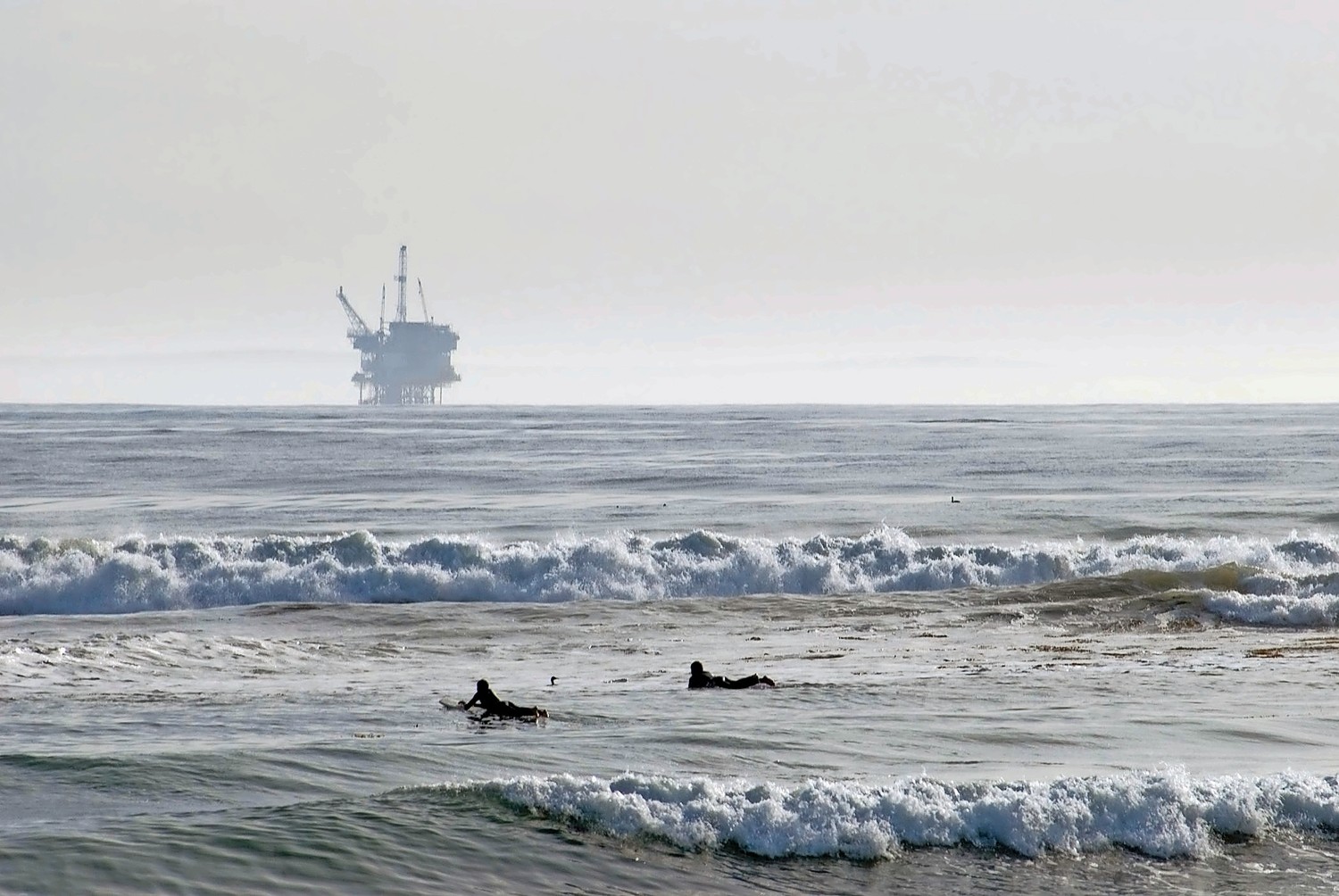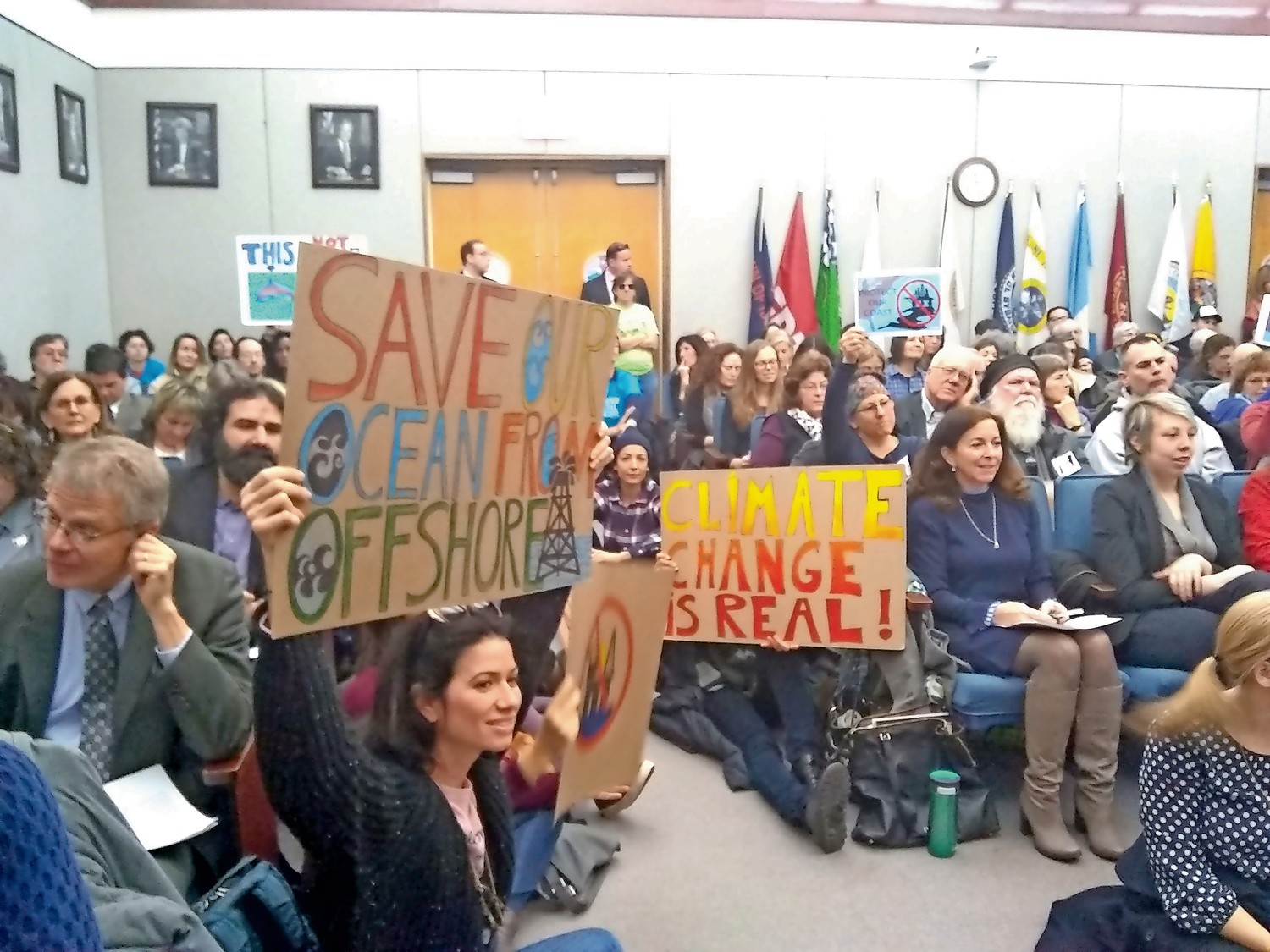Long Beach officials, environmentalists blast Trump's offshore drilling plan

Long Beach officials and local environmentalists voiced their opposition last week to the Trump administration’s plan to open ocean waters along the East Coast to offshore oil and gas drilling, saying the move would hurt the environment and devastate coastal communities in the event of a catastrophe like the Deepwater Horizon oil spill.
On Feb. 14 at the Suffolk County Legislature in Smithtown, Acting City Manager Mike Tangney, members of the Surfrider Foundation from Long Beach, the Citizens Campaign for the Environment and others attended a hearing organized by Assemblyman Steven Englebright (D-Setauket), chairman of the Assembly’s Environmental Conservation Committee.
There they told state representatives that a proposal announced last month by the U.S. Department of the Interior to open more than 90 percent of the outer continental shelf — the submerged land three miles off a state’s coastline — for oil exploration and drilling could ravage local economies and the environment.
“One spill — something the size of Deepwater Horizon — could spread up and down the entire East Coast,” said Long Beach resident Amanda Moore, a co-chair of the Surfrider Foundation’s Central Long Island Chapter, referring to the 2010 oilrig disaster that killed 11 people and spilled millions of gallons of oil into the Gulf of Mexico. “Before you even start drilling, it will decimate our natural habitat and wildlife that’s just returning to Long Beach — just recently, we started to have whales come back because we cleaned up our ocean.”
The hearing was held a day before the Interior Department held a public meeting in Albany to discuss the Draft Offshore Oil & Gas Leasing Program for 2019-24, which would open thousands of miles of U.S. coastline to oil drilling, including regions in the Atlantic and Pacific oceans that members of Surfrider said have been protected for decades.
Testimony given to the Assembly committee was shared at the federal hearing in Albany. Tangney spoke on behalf of the City Council, and blasted the proposal, which would lift a moratorium on such drilling imposed by President Barack Obama through 2022.
“Their plan states that they’ll be considering anything three miles off the coast,” said Ryan McTiernan, executive assistant to the city manager, who also attended the hearing. “At any range, we feel it would be very close to the shoreline, and that containing a spill would be very difficult before reaching the shore.”
“It would impact the entire South Shore,” added City Council President Anthony Eramo. “If there was some sort of accident, it could destroy lots of people’s livelihoods and homes. There is also the potential for spillage and accidents due to severe weather events.”
In January, the Trump administration said it would allow new offshore oil and gas drilling in nearly all U.S. coastal waters, “giving energy companies access to leases off California for the first time in decades and opening more than a billion acres in the Arctic and along the Eastern Seaboard,” The New York Times reported.
The move drew fire from U.S. Senators Charles Schumer and Kirsten Gillibrand and more than 30 of their Senate colleagues, who called on Trump to reverse the decision.
Gov. Andrew Cuomo sent a letter to Interior Secretary Ryan Zinke last month asking for New York to be added to the list of states exempted from the plan. “Offshore drilling … introduces the unprecedented risk of extremely hazardous oil spills, contributes to the acceleration of climate change and conflicts with New York’s ambitious agenda to develop offshore wind energy,” Cuomo wrote. “With this plan, the federal government is trampling on the interests of New Yorkers and threatening the future wellbeing of our state.”
Like Cuomo, many locals criticized the administration for announcing that Florida would be exempt, after that state’s Republican governor, Rick Scott, opposed the plan. Cuomo called the decision “arbitrary,” though the administration subsequently stated that Florida had not been excluded.
According to Cuomo, like Florida, New York’s coastal waters are vital to its economy. Long Island and the New York Harbor are home to 11.4 million people, and 60 percent of the state’s population live along nearly 2,000 miles of coastline.
“An oil spill offshore New York’s Atlantic coast would cripple the state’s ocean tourism economy and devastate coastal ecosystems,” Cuomo wrote, “and toxic chemical releases associated with day-to-day drilling operations and pipeline leaks would negatively impact marine and other wildlife.”
State Sen. Todd Kaminsky, a Democrat from Long Beach and a ranking member of the state Environmental Conservation Committee, said offshore drilling is “too risky.” “We should not gamble with our environment,” Kaminsky added.
Surfrider has held two local meetings and a film screening in Long Beach to inform residents about the issue, and has urged them to sign a petition opposing the plan. Members have also traveled to Washington to lobby against the proposal.
“It’s not just the oil drilling, it’s the exploration for the oil that is a huge detriment that we’re fighting against,” said Surfrider Vice Chair Marvin Weiss. “All of the U.S. coastline’s governments are up in arms.”
The drilling proposal comes after Long Beach officials and residents successfully fought a plan to build a liquefied natural gas import terminal roughly 16 nautical miles off Jones Beach, amid environmental and safety concerns. Cuomo vetoed the LNG plan in 2015, and announced last year the approval of a 90-megawatt wind farm to be built 30 miles off the coast of Montauk, which would serve as a clean, renewable energy resource.
“At this point, we shouldn’t be investing in fossil fuels anymore,” said Eramo, who was a vocal opponent of the LNG terminal. “Not only do they pollute the atmosphere with greenhouse gases, but the potential for accidents can destroy parts of our ocean and shoreline. Renewable technology is getting cheaper and cheaper every day, and I think most people are in agreement that we would like to see windmills out in the ocean.”

 52.0°,
Overcast
52.0°,
Overcast 





